#u.s. fish and wildlife service
Text
Florida’s Vanishing Sparrows
A group of eccentric endangered birds serves as a bellwether of the climate crisis.
— By Dexter Filkins |July 17, 2023
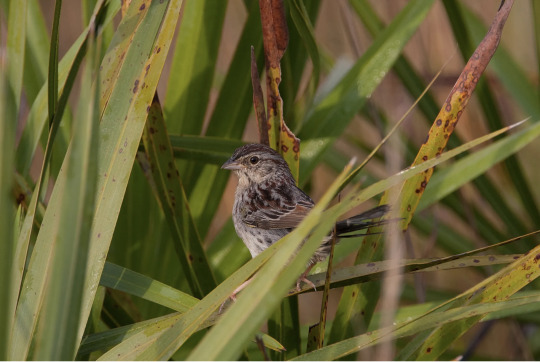
The survival of the Florida grasshopper sparrow is in doubt, but the scientists who are working to help the species refuse to give up.Photograph from Nature Picture Library/Alamy
The Avon Park Air Force Range, in central Florida, is a noisy place. Most weeks, American pilots practice dropping bombs and firing rockets there, turning old Humvees into clouds of scrap metal and smoke. Last month, a crowd gathered at the range to listen for the song of the Florida grasshopper sparrow—a faint chittering noise that evokes an insect’s buzz, giving the bird its name. As the crowd looked on expectantly, a group of tiny birds, small enough to fit in your palm, ventured tentatively from a pen, looked into the sunshine, and then flew away. The grasshopper sparrow, a modest and eccentric creature that inhabits the prairies of the central and southern parts of the state, is considered the most endangered bird in the continental United States. The birds at the bombing range were part of a program to bring their species back from the brink. “It will be hard, but we think this sparrow is worth saving,” Angela Tringali, a researcher at Archbold Biological Station, which is involved in the effort, told me.
With its subtropical climate, Florida hosts a vast array of wildlife that exists nowhere else in the county. But years of relentless human population growth have driven many to the vanishing point: Florida is home to sixty-seven species of threatened and endangered animals, among the highest numbers in the continental U.S. Those include the Miami blue butterfly, the Everglade snail kite, and the Florida panther, of which fewer than two hundred and fifty remain.
Birds that nest on or near the ground—like the Cape Sable seaside sparrow and the grasshopper sparrow—are especially vulnerable. Grasshopper sparrows can fly, but they spend most of their lives on the ground, nesting in clumps of tall grass. This provides easy access to the insects that they eat (though it also makes them susceptible to predators, like skunks and snakes). As more and more people moved to Florida, their habitat—in the prairies that used to cover much of the state south of Orlando—gave way to shopping centers and housing tracts.
For decades, scientists watched the sparrows’ numbers slowly ebb. In 1986, the U.S. Fish and Wildlife Service declared them endangered; by the end of the century, there were thought to be fewer than a thousand left. Shortly after that, the population began dropping precipitously, and by 2012 as few as seventy-five males remained. Beyond habitat loss, the reasons for the steep decline weren’t entirely clear, though some scientists suspected fire ants, an invasive species. “We started to panic,” Mary Peterson, an endangered species biologist with the U.S. Fish and Wildlife Service, said.
As the sparrows approached extinction, Peterson and other scientists decided that they couldn’t risk letting the bird continue to breed only in the wild. After identifying three concentrations of birds in protected habitats, and one on a private ranch, they gathered what adults they could and began breeding them in captivity around the state. Captive breeding is generally considered a last resort—some species of birds and other animals don’t survive it. But, Peterson said, “the risk of not doing anything could be catastrophic.” The scientists released their first batch of youngsters, a dozen birds, in 2019. Since then, they have bred and released more than seven hundred. In a good year, about a quarter of the chicks survive to adulthood in the wild; the release at the Avon Park bombing range last week brought the estimated number of birds to about two hundred and fifty.
The Avon Park range appears to be an especially promising venue for the birds. With more than a hundred thousand acres, it contains more than a dozen other threatened and endangered species. Twenty years ago, before populations collapsed, it was home to about three hundred grasshopper sparrows. The Department of Defense has proved to be an eager partner in preservation: Charles (Buck) MacLaughlin, the range operations officer, told me that the Air Force and the Fish and Wildlife Service periodically survey the landscape, when there aren’t air strikes scheduled. “I don’t think any have been killed there,” he told me.
Still, the survival of the grasshopper sparrow is in doubt. “Extinction is still a possibility,” Peterson said. The scientists aim to create ten protected sites of at least fifty breeding pairs each—a goal that is many years away, at best. The challenge is less in breeding sufficient numbers than in finding space for them; some ninety per cent of the bird’s historic habitat is gone. There are similar stories throughout the state. The Florida panther is making a modest comeback, but it’s constrained by human presence in the Everglades; last year, some twenty-five panthers were killed by cars. In the oceans off the coast, temperatures of ninety-plus degrees threaten coral reefs. But the scientists who are working to help the grasshopper sparrow refuse to give up. Tringali, the biologist, told me, “It’s really easy to do nothing. We are not done. We have a long way to go.” ♦
#Birds | Endangered Species | Florida | Environmentalism#The New Yorker#Dexter Filkins#The Avon Park Air Force Range#The Continental United States 🇺🇸#Angela Tringali#Archbold Biological Station#Miami Blue Butterfly | The Everglade Snail Kite | The Florida Panther#Orlando#U.S. Fish and Wildlife Service#Mary Peterson#Extinction#Charles (Buck) MacLaughlin#Air Force
3 notes
·
View notes
Link
Excerpt from this story from Nation of Change:
With the onset of three lawsuits filed by the Center for Biological Diversity, the United States Fish and Wildlife Service scheduled dates to decide on endangered species protections for 27 plants and animals across the country. The court order only addressed a portion of the species in which the Center is seeking to protect.
The Center called it a “legal victory,” and, while it brings them one step closer to protection as endangered or threatened species under the Endangered Species Act, there are hundreds more still waiting.
“I’m so glad these 27 species are finally getting a shot at badly needed protections and a chance to avoid extinction,” Noah Greenwald, endangered species director at the Center, said. “It’s incredibly frustrating, however, that some of these animals and plants have waited decades for help. Disturbingly, the Fish and Wildlife Service has done little to nothing to address the problems that caused these delays.”
According to a press release, “the Service has taken 12 years on average to list species under the Act, but according to the law it is supposed to take two.” Close to 47 species went extinct while under the Service’s consideration for protections, the Center reported.
“The Service’s slow, bureaucratic process for listing species has tragic consequences, like further declines, more difficult recoveries and sometimes even extinction,” Greenwald said. “This is simply unacceptable.”
4 notes
·
View notes
Text
Prehistoric lake sturgeon is not endangered, US says despite calls from conservationists
MADISON, Wis. (AP) — Lake sturgeon don’t need Endangered Species Act protections, federal wildlife officials announced Monday, saying that stocking programs have helped the prehistoric fish return to areas where they had vanished.
The decision ends the Arizona-based Center of Biological Diversity’s petition filed in May 2018 asking the U.S. Fish and Wildlife Service to list lake sturgeon as…
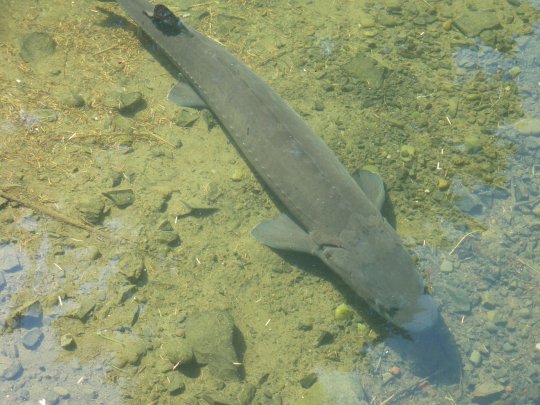
View On WordPress
1 note
·
View note
Text
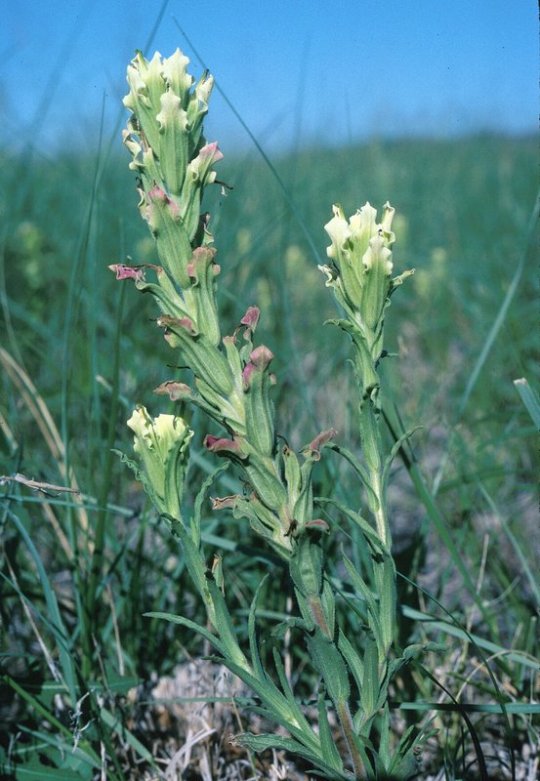
Swale paintbrush. photo by Mark Egger, WTU Herbarium
SILVER CITY, N.M.— Following a lawsuit by the Center for Biological Diversity, the U.S. Fish and Wildlife Service today proposed to protect the swale paintbrush as an endangered species. The 19-inch-tall, yellowish-reddish flower is known to exist in only a single location in southwestern New Mexico’s bootheel.
“This is great news for these graceful, stately plants and for everyone who cares about the natural world,” said Michael Robinson, senior conservation advocate at the Center. “The Endangered Species Act has prevented the extinction of so many other plant and animal species. In this instance, the law will help save a unique flower that’s part of what makes the Southwest not only botanically interesting but also beautiful.”
The swale paintbrush once lived in another location in the bootheel and in 11 spots in the Mexican states of Chihuahua and Durango. But there is no information that it survives in these previously identified habitats. It was last confirmed in Mexico in 1985.
In addition to its extremely limited known distribution, the swale paintbrush is imperiled by drought from global warming and from potential trampling by livestock.
Once protections are finalized the Service will develop a recovery plan for the plants. That plan will likely call for reintroducing the swale paintbrush to other habitats to ensure the species survives in case its current known population is wiped out.
1 note
·
View note
Text
U.S. Fish & Wildlife Service Proposes New Regulations Creating General Eagle “Take” Permits for Certain Wind Energy and Power Line Infrastructure Projects
U.S. Fish & Wildlife Service Proposes New Regulations Creating General Eagle “Take” Permits for Certain Wind Energy and Power Line Infrastructure Projects
The U.S. Fish and Wildlife Service recently published a proposed rule revising regulations that authorize permit issuance for eagle incidental take and eagle nest take under the Bald and Golden Eagle Protection Act (the “Act”). In addition to retaining the individual permits already available under the Act, the new rule proposes creation of a “general” permit for qualifying wind energy and power…

View On WordPress
#bald eagles#business#eagle preservation#Endangered Species#energy#environment#general eagle#infrastructure#legal#power lines#U.S. Fish and Wildlife Service#wind energy
0 notes
Text
US agrees to update critical habitat for Florida manatees
US agrees to update critical habitat for Florida manatees
ST. PETERSBURG, Fla. (AP) — U.S. wildlife officials have agreed to revise the critical habitat designation for Florida manatees, which have been dying in record numbers because water pollution is killing a main food source.
The U.S. Fish and Wildlife Service said in a court settlement made public Wednesday that it will publish a proposed revision by Sept. 12, 2024. The agreement comes in a…
View On WordPress
#Climate and environment#Environment#Florida#Manatees#Pollution#U.S. Fish and Wildlife Service#Water pollution#Wildlife
0 notes
Text
Manatees At Risk
Loosened Human Pollution Laws Put Manatee in Danger
Manatees are starving in Florida waters, only five years after the U.S. Fish and Wildlife Service (FWS) took them off the Endangered Species list.
In the 1960s and ’70s, the West Indian manatee, which is native to Florida waters, was down to only a few hundred individuals. In 2016, the year’s survey reported 6250 manatees, enough to put them over the threshold of being moved from ‘endangered’…

View On WordPress
#endangered species#Florida#manatees#patrick rose#ragan whitlock#U.S. Fish and Wildlife Service#water pollution
1 note
·
View note
Text
Low Ice Levels in Antarctica Killed Thousands of Penguin Chicks, Study Says
Thousands of penguin chicks in four emperor penguin colonies likely died after Antarctic ice broke up earlier than usual last year, creating a “catastrophic breeding failure.”
In a study published this week in Communications Earth & Environment, researchers from the British Antarctic Survey outlined the very high probability that most chicks from four out of the five known emperor penguin…

View On WordPress
#Adélie penguin#Antarctica#Bird#Emperor penguin#Environment#Flightless birds#Gizmodo#Human Interest#King penguin#Penguin#Peter Fretwell#Tern#the u.s. fish and wildlife service
2 notes
·
View notes
Text
Badgers and coyotes hunt together. It's a thing. The U.S. Fish and Wildlife Service explains that “studies have shown that this unusual relationship is beneficial for both species. The coyote can chase down prey if it runs and the badger can dig after prey if it heads underground into its burrow systems.”
#badger#animal meme#memes#meme#animals#coyote#top post#animal videos#wholesome#tank#badger badger badger#animal memes#🦡#forest
68K notes
·
View notes
Text

Wood Brothers and Fans Protect Wildlife
- “Let’s do it again,” band says
One dollar from every Wood Brothers ticket sold in 2022 was donated to the Nature Trust of BC.
Working under the North American Wetlands Conservation Act, the U.S. Fish and Wildlife Service added $2 to every one the Woods raised.
Together, the United States and Canada used the funds to conserve and protect wetlands and cross-border migration corridors.
“Thanks to everyone who bought a ticket to our shows this past year,” the band said in a statement.
“Your support helped permanently protect two essential wetland habitats. Let’s do it again” in 2023.
1-2-23
#the wood brothers#chris wood#oliver wood#jano rix#the nature trust of BC#the u.s. fish and wildlife service
0 notes
Text

Meet one of the planet’s smallest turtles: the bog turtle (Glyptemys muhlenbergii)! This petite reptile grows up to 4.5 in (11.4 cm) long. It’s easily identifiable by the orange patches on either side of its head.
The bog turtle has an impressive lifespan, with the oldest documented individual reaching an age of 61! Unfortunately, this species is critically endangered due in part to poaching and habitat loss as a result of human expansion.
Photo: U.S. Fish and Wildlife Service Headquarters, CC BY 2.0, flickr (juvenile pictured)
#science#nature#natural history#animals#turtle#cool animals#did you know#animal kingdom#animal facts#reptile#herpetology#small animals
2K notes
·
View notes
Text
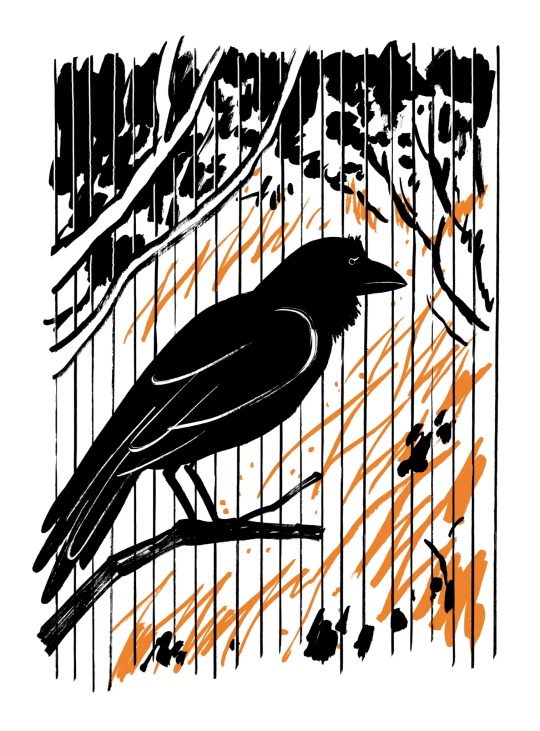
Illustration by João Fazenda
The Burning of Maui
The governor called the fires Hawaii’s “largest natural disaster” ever. They would more accurately be labelled an “unnatural disaster.”
— By Elizabeth Kolbert | August 20, 2023
The ‘alalā, or Hawaiian crow, is a remarkably clever bird. ‘Alalā fashion tools out of sticks, which they use, a bit like skewers, to get at hard-to-reach food. The birds were once abundant, but by the late nineteen-nineties their population had dropped so low that they were facing extinction. Since 2003, all the world’s remaining ‘alalā have been confined to aviaries. In a last-ditch effort to preserve the species, the San Diego Zoo Wildlife Alliance has been breeding the crows in captivity. The alliance keeps about a third of the birds—some forty ‘alalā—at a facility outside the town of Volcano, on the Big Island, and the rest outside the town of Makawao, on Maui. Earlier this month, the Maui population was very nearly wiped out. On the morning of August 8th, flames came within a few hundred feet of the birds’ home and would probably have engulfed it were it not for an enterprising alliance employee, one of her neighbors, and a garden hose.
According to the U.S. Fish and Wildlife Service, “many factors” contributed to the ‘alalā’s decline, including habitat destruction, invasive species, and the effects of agriculture on the landscape. Owing to these developments, Hawaii’s native fauna in general is in crisis; the state has earned an unfortunate title as “the extinction capital of the world.” Of the nearly hundred and fifty bird species that used to be found in Hawaii and nowhere else, two-thirds are gone. Among the islands’ distinctive native snails, the losses have been even more catastrophic.
Last week, as the death toll from the fires in West Maui continued to mount—late on Friday, the number stood at a hundred and eleven—it became clear that the same “factors” that have decimated Hawaii’s wildlife also contributed to the deadliness of the blazes. Roughly a thousand people have been reported as still missing, and some two thousand homes have been destroyed or damaged. The worst-hit locality, the town of Lahaina, which lies in ruins, was built on what was once a wetland. Starting in the mid-nineteenth century, much of the vegetation surrounding the town was cleared to make way for sugar plantations. Then, when these went out of business, in the late twentieth century, the formerly cultivated acres were taken over by introduced grasses. In contrast to Hawaii’s native plants, the imported grasses have evolved to reseed after fires and, in dry times, they become highly flammable.
“The lands around Lahaina were all sugarcane from the eighteen-sixties to the late nineteen-nineties,” Clay Trauernicht, a specialist in fire ecology at the University of Hawaii at Mānoa, told the Guardian. “Nothing’s been done since then—hence the problem with invasive grasses and fire risk.”
Also contributing to the devastation was climate change. Since the nineteen-fifties, average temperatures in Hawaii have risen by about two degrees, and there has been a sharp uptick in warming in just the past decade. This has made the state more fire-prone and, at the same time, it has fostered the spread of the sorts of plants that provide wildfires with fuel. Hotter summers help invasive shrubs and grasses “outgrow our native tree species,” the state’s official Climate Change Portal notes.
As Hawaii has warmed, it has also dried out. According, again, to the Climate Change Portal, “rainfall and streamflow have declined significantly over the past 30 years.” In the weeks leading up to the fires in West Maui, parts of the region were classified as suffering from “severe drought.” Meanwhile, climate change is shifting storm tracks in the Pacific farther north. Hurricane Dora, which made history as the longest-lasting Category 4 hurricane on record in the Pacific, passed to the south of Maui and helped produce the gusts that spread the Lahaina fire at a speed that’s been estimated to be a mile per minute.
After visiting the wreckage of Lahaina, Hawaii’s governor, Josh Green, called the Maui fires the “largest natural disaster Hawaii has ever experienced.” In fact, the fires would more accurately be labelled an “unnatural disaster.” As David Beilman, a professor of geography and environment at the University of Hawaii at Manoa, recently pointed out, for most of Hawaii’s history fire simply wasn’t part of the islands’ ecology. “This Maui situation is an Anthropocene phenomenon,” he told USA Today.
A great many more unnatural disasters lie ahead. Last month was, by a large margin, the hottest July on record, and 2023 seems likely to become the warmest year on record. Two days after Lahaina burst into flames, the National Oceanic and Atmospheric Administration issued a revised forecast for the current Atlantic hurricane season, which runs through the end of November. The agency had been predicting a “near-normal” season, with between five and nine hurricanes. But, because of record sea-surface temperatures this summer—last month a buoy in Manatee Bay, south of Miami, registered 101.1 degrees, a reading that, as the Washington Post put it, is “more typical of a hot tub than ocean water”—noaa is now projecting that the season will be “above normal,” with up to eleven hurricanes. Rising sea levels and the loss of coastal wetlands mean that any hurricanes that make landfall will be that much more destructive.
A few days after noaa revised its forecast, officials ordered the evacuation of Yellowknife, the capital of Canada’s Northwest Territories. A wildfire burning about ten miles away would, they feared, grow to consume the city. The Canadian Broadcasting Corporation called the evacuation order “extraordinary.” This summer has been Canada’s worst wildfire season on record, and, at times, the smoke has spread all the way to Europe. There are currently something like a thousand active fires in the country.
Two days after the Yellowknife evacuation was ordered, another Pacific hurricane—Hilary—intensified into a Category 4 storm. Hilary was being drawn north by a “heat dome” of high pressure over the central Plains, which was expected to bring record temperatures to parts of the Midwest. The storm’s unusual track put some twenty-six million people in four states—California, Utah, Nevada, and Arizona—under flash-flood watches.
How well humanity will fare on the new planet it is busy creating is an open question. Homo sapiens is a remarkably clever species. So, too, was the ‘alalā. ♦
— Published in the Print Edition of the August 28, 2023, New Yorker Issue, with the Headline “Fire Alarm.”
#Maui#Natural Disaster | Un-natural Disaster#Elizabeth Kolbert#The New Yorker#Alalā | Hawaiian Crow#San Diego Zoo Wildlife Alliance#U.S. Fish and Wildlife Service#Lahaina#Clay Trauernicht | University of Hawaii at Mānoa#Climate Change Portal#Hawaii’s Governor | Josh Green#David Beilman | University of Hawaii at Manoa#Anthropocene Phenomenon#National Oceanic and Atmospheric Administration#Atlantic Hurricane 🌀#Manatee Bay | South of Miami#Yellowknife | Canada’s 🇨🇦 Northwest Territories#Europe#Pacific Hurricane 🌀#Mid-West | California | Utah | Nevada | Arizona#Fire 🔥 Alarm 🚨
0 notes
Text

Green Jay (Cyanocorax luxuosus), family Corvidae, order Passeriformes, sitting on top of a Javelina (Dicotyles tajacu), family Tayassuidae, South, TX, USA
photograph by Steve Hillebrand
U.S. Fish and Wildlife Service
#jay#cyanocorax#covidae#passeriformes#bird#ornithology#javelina#dicotyles#tayassuidae#ungulate#artiodactyla#mammal#animals#nature#north america
498 notes
·
View notes
Text
So, I saw a post circulating here about the “extinction of birds in 2023“, with this picture attached
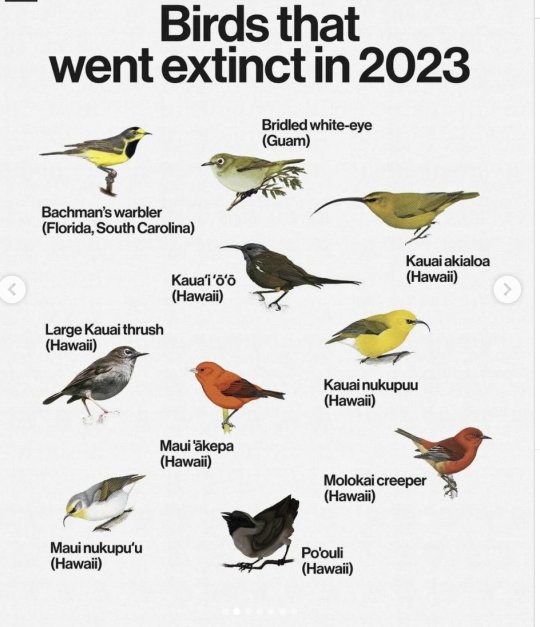
My, what a bold claim! All these poor birdies, “went extinct” in just one year alone? Why would such an outrageous, depressing and catchy claim be spread around?
Let’s fact check it.
All the species listed, Bachman’s wabler (Vermivora bachmanii, 1988 or 1980s), Kāmaʻo or large Kauaʻi thrush (Myadestes myadestinus, 1989 or 1987), Bridled white-eye (Zosterops conspicillatus, 1983 and 1983), Kauai ʻakialoa (Akialoa stejnegeri, 1969 or 1960s), Kauaʻi ʻōʻō (Moho braccatus, 1987 and 1987), Kauaʻi nukupuʻu (Hemignathus hanapepe, 1899 and 1899), Maui ʻakepa (Loxops ochraceus, 1988 and 1988), Kākāwahie or Molokaʻi creeper (Paroreomyza flammea, 1963 and 1963), Maui nukupuʻu (Hemignathus affinis, 1896* and 1996 ) and Poʻouli (Melamprosops phaeosoma, 2004 and 2004) are all, indeed, either extinct or possibly extinct, according to IUCN Red List of Threatened Species and U.S. Fish and Wildlife Service.
What are the dates after the scientific names? Well, those all are *last sightings* per IUCN Red List and USFWS accordingly. So, these birds were not seen for DECADES and in one case FOR MORE THAN A GODDAMN CENTURY. And sure as hell there is NO information about them very suddenly being gone all last year.
What’s the deal then? Where did this claim even come from? Well, likely from this article "21 Species Delisted from the Endangered Species Act due to Extinction" from U.S. Fish & Wildlife Service. It includes all the birds in the picture (with the last date of sight, listed above).
From the article: “The U.S. Fish and Wildlife Service is delisting 21 species from the Endangered Species Act due to extinction. Based on rigorous reviews of the best available science for each of these species, the Service determined these species are extinct and should be removed from the list of species protected under the ESA. Most of these species were listed under the ESA in the 1970s and 80s and were in very low numbers or likely already extinct at the time of listing.”
They didn’t ALL fucking suddenly drop dead all in the same year – if they did, as some other people have already pointed out, there would be an uproar EVERYWHERE. Ornithologists alone would not let it live down. They were officially delisted from endangered status by U.S. Fish & Wildlife Service that year, there was a proposition to do so back in 2021, too. Some were already declared extinct before by IUCN.
Despite not being seen for so long, they remained on the list of critically endangered for a long while, cause you cannot just immediately declare a species extinct. There’s no RTS unit amount number that goes to 0 once there’s nothing left; people keep checking for them over and over and over again. Sometimes it turns out that a species previously thought to be extinct is actually still out there. Attenborough's long-beaked echidna for example was last sighted SIXTY YEARS ago before being sighted again in 2023. It was thought to be extinct for a while, before 2007, when signs of its activity was spotted again. More often than not though, a species turns out to be actually very extinct, unfortunately – like in this case.
I cannot possibly know if the creators of this picture, or people that spread it on social media ever had good intentions behind it for awareness, however even if they did, it turned out to be nothing but very blatant misinformation, with a fearmongering effect. The only thing this achieves is not awareness of habitat destruction or pernicious tourist influence or climate change or what have you – the only thing this achieves is despair and panic. People already so casually fall into complete doomerism, they’re very used to hear bad news. And guess what doomerists do? Typically nothing. It renders people helpless. It’s not gonna make people get up and be ready for action, it, at best, would just make people feel sad and/or angry, or at worst, feed into the current alarming rise of ecofascism. NOTHING good comes out of this. At the very goddamn least, no one needs to lie to promote a goal.
The aim of the USFWS article, on the other hand, IS to make people aware about those animals that are already gone from the face of the planet, no matter how long ago, and that now we have to protect those animals that are critically endangered and still out there – to not have to repeat those tragedies.
Be very critical of what you see on the internet, especially if it’s sited with no sources. Especially-especially if it causes a strong emotional reaction. Lies and misinfo could only hurt the cause, no matter how noble. And please, be aware of your local wildlife status. Check in with it accoding to trusted sources.
[*sic, possibly a typo and it was meant to be 1996, other confirmed date listed there is 1989]
Addendum: I could not for sure find the uncredided (who woulda thunken that ppl that don't cite their sources would also not credit the artists) author(s) of the bird illustrations. If someone finds them, please, let me know!
Edit: Huge thanks to moosefinch for finding the sources for the artwork! I'll add their contribution below:
"Image sources!
The Kauai ʻakialoa, Kauaʻi ʻōʻō, Maui ʻakepa and Kauaʻi nukupuʻu are from Birds of the World.
The "Maui nukupuʻu" and "Molokaʻi creeper" illustrations are also Birds of the World, but are actually a female Kauaʻi nukupuʻu (the other being the male) and Laysan honeycreeper/Laysan ʻapapane respectively.
The bridled white-eye is by Lauren Helton according to this source.
Bachman's warbler is by Lynn Hawkinson Smith/smithhouse2 according to this Etsy listing.
The Poʻouli is by Christina Czajkowski."
#ah I just now see that the tumblr reblog of the pic and the twitter thread attached was deleted#yet the post is still in circulation. The damage lingers#so fucking irresponsible#fact check#misinformation#birds#bird#ecology#environmentalism#extinction#conservation#species conservation#animals#hawaiʻi#important
805 notes
·
View notes
Text
Note: Reasons to Be Cheerful has had weirdly huge formatting issues for the past six or so months, so if that version is a mess, this link should work better.
"Florida Power & Light Company (FPL), the Sunshine State’s largest power utility, employs all the people you might expect: electricians, lineworkers, mechanical engineers — and a few you might not. For over 40 years, the company has kept a team of wildlife biologists on staff. Their task? Monitoring the giant carnivorous reptiles that reside in one of the state’s nuclear power plants.
Saving the American Crocodile
What sounds like a low-budget creature feature is actually a wildly successful conservation story. It goes like this: In 1975, the shy and reclusive American crocodile was facing extinction. Over-hunting and habitat decline caused by encroaching development had pushed its numbers to a record low. By 1975, when it was listed as endangered under the Endangered Species Act, there were only 200 to 300 left.
Three years later, in 1978, workers at the Turkey Point nuclear power plant in Homestead, Florida happened upon something that must have made them gasp: a crocodile nest along one of the plant’s 5,900-acre “cooling canals.” Rather than drive the crocs away — perhaps the easiest solution — FPL hired a team of biologists and implemented a Crocodile Management Plan. Its goal was unconventional: provide a suitable habitat for the crocs within the workings of the nuclear power plant, allowing both to coexist.
Over the course of the next 30 years, FPL’s wildlife biologists monitored nests, tagged hatchlings and generally created a hospitable environment for the reptiles. As it turned out, the plant’s cooling canals provided an ideal habitat: drained earth that never floods on which to lay eggs directly adjacent to water. Over the years, more and more crocs made the cooling canals home. By 1985, the nests at Turkey Point were responsible for 10 percent of American crocodile hatchlings in South Florida. In 2007, the U.S. Fish and Wildlife Service downgraded the American crocodile’s status from endangered to threatened, singling out FPL for its efforts.
The program continues to this day. To date, biologists have tagged some 7,000 babies born at the plant. In 2021, there were a record-setting 565 crocodile hatchlings at the Turkey Point facility.
"Reconciliation Ecology"
Turkey Point’s efforts are an example of what is known in the conservation world as “reconciliation ecology.” Rather than create separate areas where nature or animals can thrive in isolation from humans, reconciliation ecology suggests that we can blend the rich natural world with the world of human activity. Michael Rosenzweig, an emeritus professor of ecology and evolutionary biology at the University of Arizona, was a leading force in establishing this concept. The author of Win-Win Ecology: How the Earth’s Species can Survive in the Midst of Human Enterprise, Rosenzweig has pointed out that although human encroachment has typically been considered a threat to biodiversity, the notion that the world must be either “holy” or “profane,” ecologically speaking, is simply not true.
“In addition to its primary value as a conservation tool, reconciliation ecology offers a valuable social byproduct,” writes Rosenzweig in his first chapter. “It promises to reduce the endless bickering and legal wrangling that characterize environmental issues today.”
-via Reasons to Be Cheerful, May 5, 2022. Article continues below. All headings added by me for added readability.
Dr. Madhusudan Katti, an associate professor in the Department of Forestry and Environmental Resources at North Carolina State University, was inspired by Rosenzweig when he did his postdoc at Arizona State. Katti has now been in the field of reconciliation ecology for two decades and teaches classes on the subject. “To me it’s finding solutions to reconciling human development with biodiversity conservation,” Katti says.
This common ground between development and conservation can be consciously planned, like FPL managing a crocodile habitat at a nuclear power plant or the state-sponsored vertical gardens and commercial farms on high-rise buildings in Singapore. Other examples include the restoration of the coral reef around an undersea restaurant in Eilat, Israel, or recent legislation in New York City requiring patterned glass on high-rise buildings, making windows more visible to migratory birds. Other planned examples of reconciliation ecology can be more individually scaled: a rooftop garden in an urban setting, modifying your garden to earn a “backyard bird habitat” certification from the Audubon Society, or even just mowing your lawn less often...
Reconciliation Ecology: Nature's Already Doing It Without Us
But there are countless examples of “accidental” incidents of reconciliation ecology, as well. One of Katti’s favorites is the kit fox of California’s San Joaquin Valley. “The kit fox was one of the very first species listed on the Endangered Species Act,” Katti says. Its decline was caused by habitat loss through agricultural and industrial development, as well as the extermination of the gray wolf population, which led to an increase in coyotes. So kit foxes adapted and moved to new habitats. One of these was the city of Bakersfield, California.
“Bakersfield, surrounded by oil pumps, would be the last place you’d expect to find an endangered species,” Katti says. But researchers think kit foxes have migrated to Bakersfield because they actually have more protection there from predators like coyotes and bobcats. “The kit foxes have figured out that if they can tolerate the human disturbance and live with people, then they are safer from all these other predators,” he says.
Living in the city has led to some interesting behavioral changes. In the wild, for instance, a female kit fox gives birth to her young and raises them by herself in a den. But in the city, researchers have observed multiple females raising their litters together in the same den. “It’s like a form of cooperative breeding,” Katti says. “That wouldn’t happen in the wild.” ...
The Big Picture: How We Think about Conservation
Reconciliation Ecology isn’t just we humans welcoming animals like crocodiles and foxes into our environments, though. It’s also living with nature in a way that most Western societies haven’t done since the Enlightenment. “In recent years, there’s been a recognition that the ‘fortress conservation’ model — keeping nature separated from humans and not thinking of or valuing human-inhabited landscapes — those ideas are outdated,” says Katti.
In fact, in Katti’s classes on reconciliation ecology, he embraces the notion of reconnecting people with their land if they have been unjustly separated from it. “The term reconciliation also applies to all the colonial legacies where both nature and people have been harmed,” Katti says. “For Indigenous communities, the harm done to ecosystems, it’s happened together. So you can talk about addressing both. That’s where a lot of my thinking is at the moment.”
A hopeful version of this sort of reconciliation is happening in California where colleagues of Katti’s who are tribal members are re-introducing “tribal burns” in some areas. Controlled burns have been a part of many Indigenous cultures for millenia, both as a way to prevent devastating forest fires, but also to encourage the growth of certain plants like hazel that are used for basket-weaving and other crafts.
“The notion that people don’t belong there and ‘let nature take care of itself’ doesn’t really work,” Katti says. “That’s the legacy of Western European Enlightenment thinking — a divide between human and nature. That is a real faulty view of nature. People have been part of the ecosystem forever.”
-via Reasons to Be Cheerful, May 5, 2022
#a bit older but still ongoing/relevant and still very cool#florida#crocodile#reptile#ecology#environment#sustainability#endangered species#united states#california#kit fox#nuclear power plant#reconciliation#colonialism#the enlightenment#conservation#human beings#good news#hope#urban ecology
1K notes
·
View notes
Text
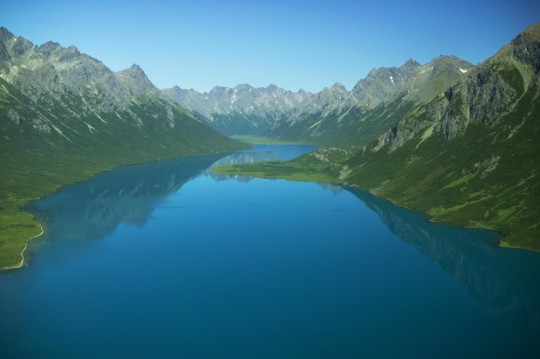

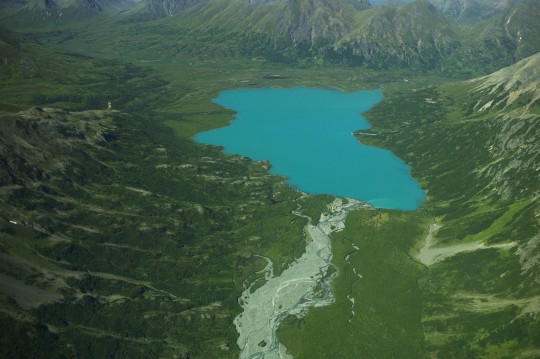

Togiak Nation Wildlife Refuge, Alaska by Alaska Region U.S. Fish & Wildlife Service
2K notes
·
View notes